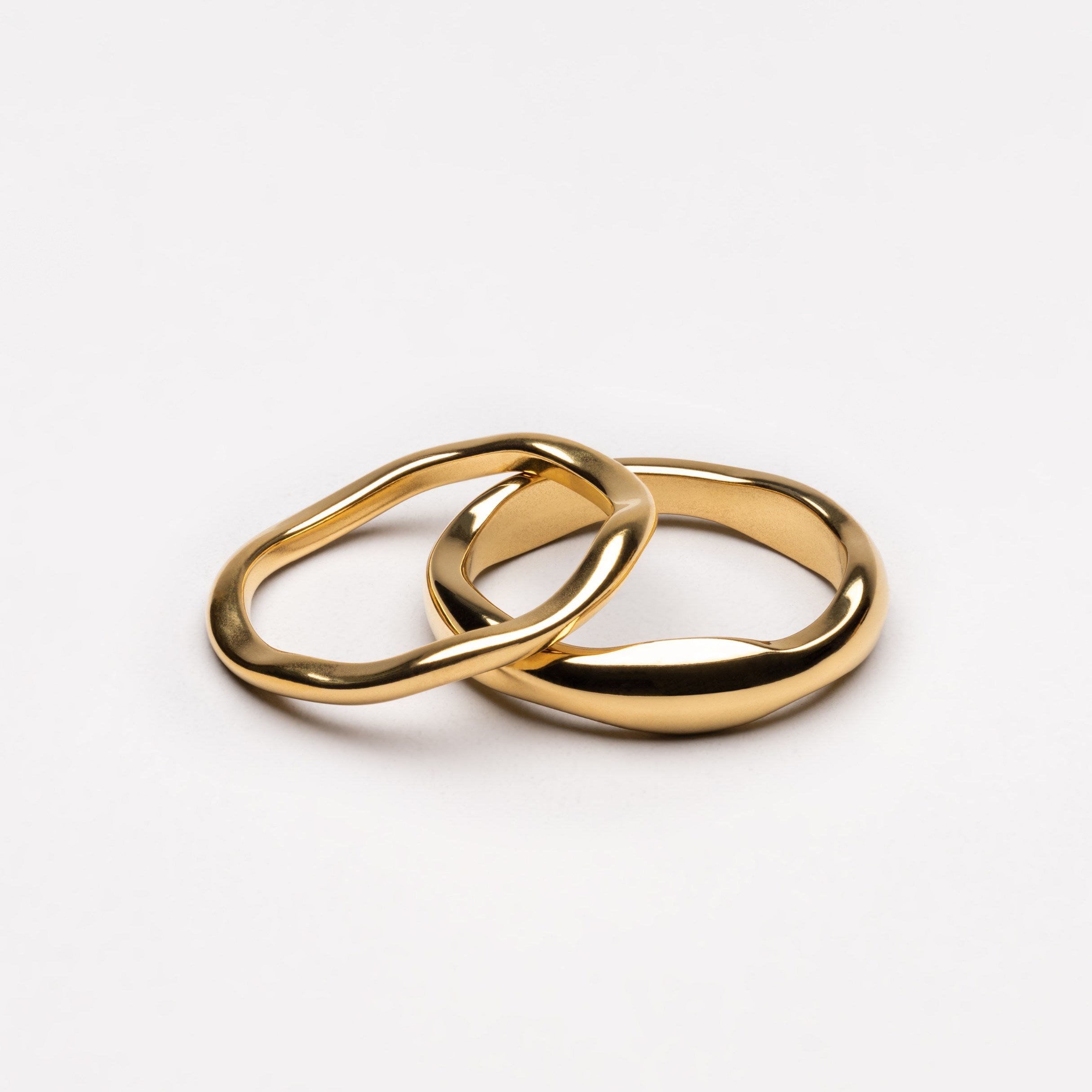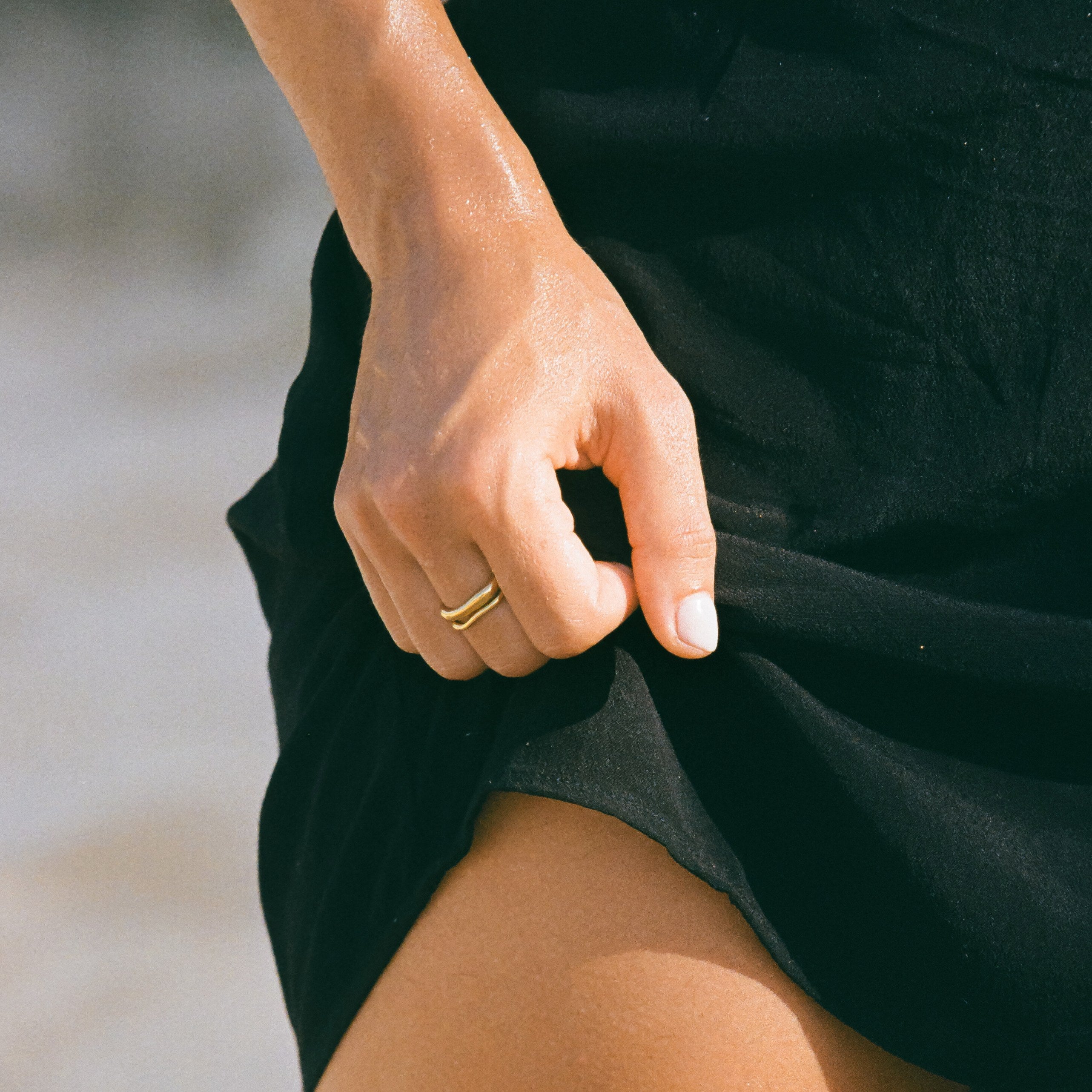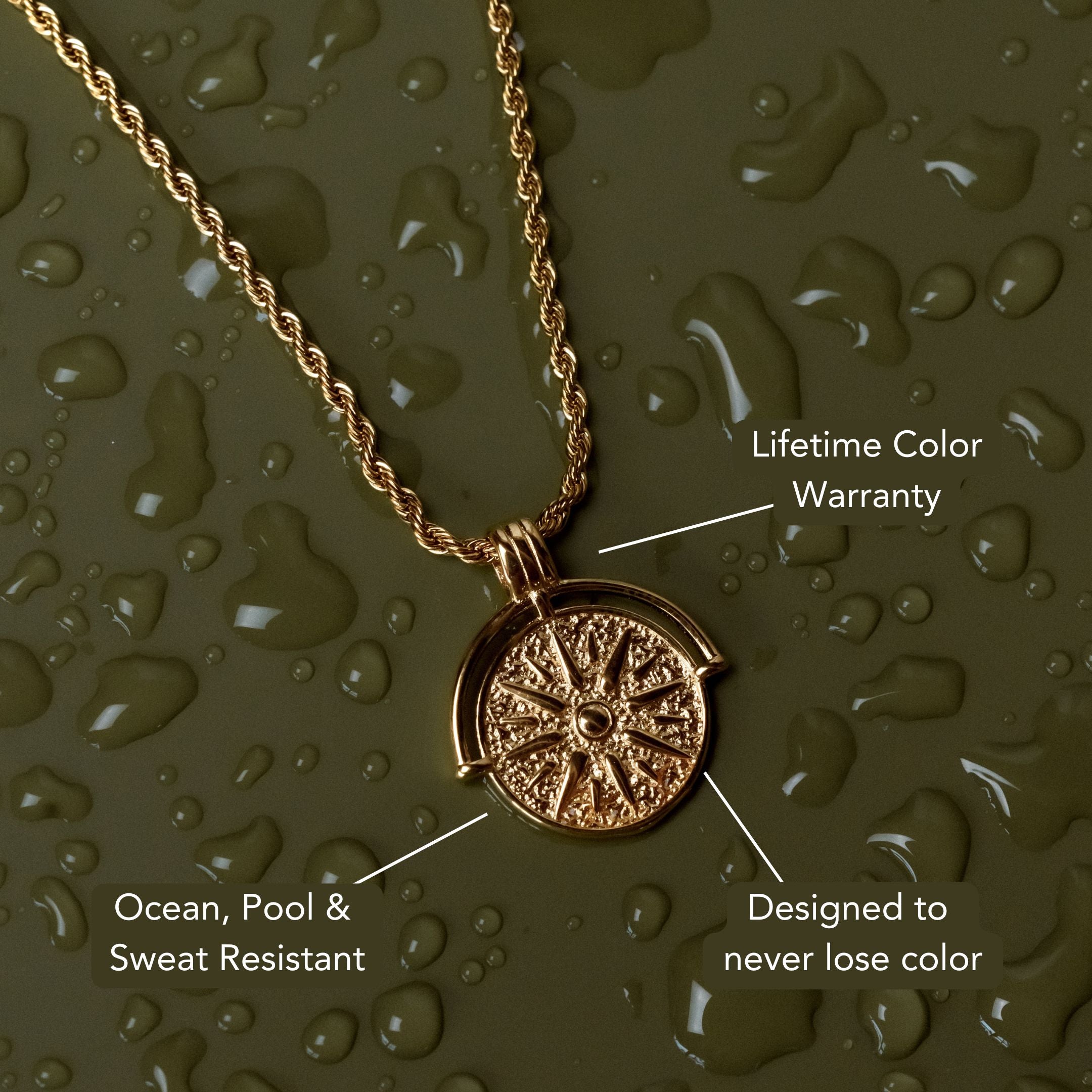
Pro Tips on How to Keep Jewelry From Tarnishing in Summer
Wondering how to keep jewelry from tarnishing in summer? Start by choosing tarnish-resistant metals like stainless steel or high-karat gold. Store each piece separately with anti-tarnish strips in a cool, dry place, and clean gently with mild soap and a soft cloth. Always ensure jewelry is thoroughly dried before wearing or storing. Avoid exposing it to sweat, sunscreen, or water, which can speed up oxidation. Adding protective coatings or rhodium plating offers extra defense. For high-karat gold options, explore our trending gold necklaces collection for pieces that are both stylish and durable.
Understand Why Jewelry Tarnishes in Hot Weather
When temperatures rise and humidity soars, jewelry is exposed to environmental factors that accelerate tarnishing. High heat and moisture increase the rate of chemical reactions between metal surfaces and elements in the air.
Oxidation causes the thin layer of metal—like silver or copper—to react with oxygen and sulfur compounds, resulting in a dull or discolored appearance.
Sweat, sunscreen, and saltwater further exacerbate this process by introducing additional reactive agents. In summer, you’ll notice tarnish forming more quickly due to frequent exposure to these conditions.
To minimize damage, you need to understand that even brief contact with water or air pollutants can accelerate oxidation. By recognizing these environmental factors, you’re better equipped to adopt habits that protect your jewelry during hot weather.
Opt for Tarnish-Resistant Materials
Although summer conditions can be harsh on most metals, you can considerably reduce tarnishing by choosing jewelry made from tarnish-resistant materials. Opt for pieces crafted from high-quality metal alloys like stainless steel, platinum, or titanium, which are naturally less reactive to sweat, humidity, and air.
Sterling silver mixed with anti-tarnish alloys, such as argentium, offers enhanced durability compared to traditional silver. Gold jewelry with higher karatage (14K or above) also resists tarnish more effectively.
In addition, look for jewelry finished with protective coatings like rhodium plating or clear lacquer. These barriers shield the underlying metal from environmental factors that accelerate tarnish.
Store Your Jewelry the Right Way
Even with the most tarnish-resistant materials, improper storage can accelerate the dulling and discoloration of your jewelry. You’ll want to keep each piece separated—preferably in individual pouches or lined compartments—to prevent metal-on-metal contact and minimize exposure to air and humidity.
For jewelry display tips, opt for glass-topped cases or acrylic organizers, which allow you to see your collection while shielding it from environmental factors.
During the humid summer months, utilize seasonal storage solutions like anti-tarnish strips or silica gel packs within your storage containers.
Avoid leaving jewelry in bathrooms or direct sunlight, as moisture and UV exposure hasten tarnishing.
Always secure clasps before storing to maintain shape and prevent tangling.
Clean Your Pieces Regularly and Gently
Proper storage forms the backbone of jewelry care, but regular, gentle cleaning is just as important for preventing tarnish—especially during summer. You’ll want to remove skin oils, dust, and environmental particles that accelerate tarnishing.
Use non-abrasive cleaning tools, such as a soft-bristled brush or a microfiber cloth, to avoid scratching delicate surfaces. For most metals, a mild soap diluted in lukewarm water and a gentle wipe will suffice; avoid harsh chemicals that can damage finishes.
Mastering polishing techniques is key: always polish in the direction of the metal’s grain using specialized jewelry cloths. Rinse thoroughly and dry pieces completely before wearing or storing them.
Consistent, careful cleaning maintains your jewelry’s brilliance and forms a proactive defense against seasonal tarnish.
Limit Exposure to Sweat, Sunscreen, and Water
When temperatures rise and outdoor activities beckon, jewelry faces increased exposure to sweat, sunscreen, and water—all factors that hasten tarnishing. Sweat contains salts and alters your skin’s pH balance, which can interact with metals and accelerate oxidation. Skin oils also play a role; they can create a film that traps moisture and contaminants against your jewelry, hastening discoloration.
Sunscreens, especially those with chemical UV filters, often contain ingredients that react with metal alloys, amplifying tarnishing. Water, whether from swimming pools, oceans, or even showers, exposes your pieces to minerals and chemicals like chlorine that corrode finishes.
To minimize tarnish, remove jewelry before exercising, swimming, or applying sunscreen. Let your skin dry completely before putting pieces back on to protect their integrity.
Use Protective Coatings or Barriers
Although frequent cleaning helps, applying a protective coating creates an effective barrier between your jewelry and environmental aggressors. Use specialized protective coatings such as clear jewelry lacquers or anti-tarnish sprays to shield metals from moisture, oxygen, and pollutants. These products form an invisible film that slows down oxidation, a primary cause of tarnish.
For DIY barrier methods, consider using clear nail polish on non-precious metals—just ensure you apply a thin, even layer and allow it to dry thoroughly. Reapply coatings periodically, especially after cleaning or heavy use, to maintain their efficacy.
Protective coatings won't alter your jewelry's appearance but will considerably prolong its shine and integrity. Always check manufacturer recommendations to ensure compatibility with delicate gemstones or intricate metalwork before applying any barrier methods.
Pack Smartly When Traveling With Jewelry
Once you've safeguarded your jewelry with protective coatings, thoughtful packing becomes your next defense against tarnish while traveling. Prioritize jewelry maintenance by choosing packing essentials that minimize exposure to air, humidity, and friction. Use zip-lock bags or anti-tarnish pouches to individually store each piece, preventing metal-on-metal contact and reducing oxidation risk.
Hard-sided travel cases with soft, compartmentalized interiors are ideal for delicate items, ensuring they don’t shift or scratch in transit. Never store jewelry in direct contact with toiletries, as spills or vapors can accelerate tarnishing. For added protection, insert silica gel packets to absorb moisture in your jewelry pouch.
Frequently Asked Questions
Can Tarnished Jewelry Be Restored to Its Original Shine?
You can often restore tarnished jewelry to its original shine using restoration techniques like ultrasonic cleaning, chemical dips, or gentle hand-polishing. If oxidation persists, seek professional polishing for expert removal of stubborn tarnish and flawless brilliance.
Are Home Remedies Effective for Removing Tarnish From Jewelry?
You'll find that home remedies like baking soda paste or vinegar baths can offer effective tarnish removal for many metals. However, always test on a small area first, since abrasive methods may damage delicate gemstones or plated surfaces.
How Does Humidity Affect Different Types of Jewelry Metals?
You’ll notice humidity effects vary: silver tarnishes quickly as it reacts with moisture and sulfur, gold’s stable but alloys may dull, and base metals like copper or brass oxidize rapidly. Understand metal reactions to protect your jewelry.
Is It Safe to Wear Tarnished Jewelry on Sensitive Skin?
You shouldn't wear tarnished jewelry on sensitive skin, as it increases skin irritation and allergy risks. Tarnish often contains metal oxides or sulfides, which can trigger contact dermatitis or allergic reactions, especially if you have metal sensitivities.
What Are the Best DIY Jewelry Cleaning Solutions?
You’ll get great results using DIY cleaning methods like a paste of baking soda and water or soaking jewelry in a natural remedy of vinegar and mild dish soap. Gently scrub with a soft-bristle brush for best results.
Conclusion
By understanding why jewelry tarnishes and choosing tarnish-resistant metals, you’ll extend your pieces’ longevity. Always store your jewelry in airtight containers with anti-tarnish strips to minimize exposure to moisture. Clean your pieces regularly using a gentle, non-abrasive cloth, and avoid contact with sweat, sunscreen, and chlorinated water. Apply a clear protective coating if needed. When traveling, use individual pouches or organizers. With these expert strategies, your jewelry will maintain its brilliance all summer long.























Leave a comment
This site is protected by hCaptcha and the hCaptcha Privacy Policy and Terms of Service apply.